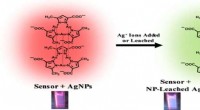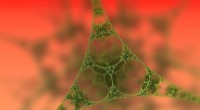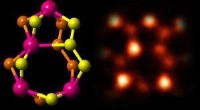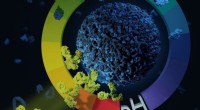
Wetenschap
Nanotherapie biedt nieuwe hoop voor de behandeling van diabetes type 1

Tegoed:Unsplash/CC0 Publiek domein
Personen met diabetes type 1 moeten elke dag de voorgeschreven insulineregimes zorgvuldig volgen en injecties van het hormoon krijgen via een spuit, insulinepomp of een ander apparaat. En zonder levensvatbare langdurige behandelingen is deze behandeling een levenslange gevangenisstraf.
Pancreaseilandjes regelen de insulineproductie wanneer de bloedsuikerspiegel verandert, en bij type 1-diabetes valt het immuunsysteem van het lichaam dergelijke insulineproducerende cellen aan en vernietigt ze. Eilandjestransplantatie is de afgelopen decennia naar voren gekomen als een mogelijke remedie voor type 1-diabetes. Met gezonde getransplanteerde eilandjes hebben type 1-diabetespatiënten mogelijk geen insuline-injecties meer nodig, maar transplantatie-inspanningen hebben te maken gehad met tegenslagen omdat het immuunsysteem uiteindelijk nieuwe eilandjes blijft afwijzen. De huidige immunosuppressiva bieden onvoldoende bescherming voor getransplanteerde cellen en weefsels en worden geplaagd door ongewenste bijwerkingen.
Nu heeft een team van onderzoekers van de Northwestern University een techniek ontdekt om immunomodulatie effectiever te maken. De methode maakt gebruik van nanocarriers om het veelgebruikte immunosuppressieve rapamycine opnieuw te ontwikkelen. Met behulp van deze met rapamycine beladen nanodragers, genereerden de onderzoekers een nieuwe vorm van immunosuppressie die in staat is zich te richten op specifieke cellen die verband houden met de transplantatie zonder bredere immuunresponsen te onderdrukken.
Het artikel is vandaag gepubliceerd in het tijdschrift Nature Nanotechnology . Het Northwestern-team wordt geleid door Evan Scott, de Kay Davis-professor en een universitair hoofddocent biomedische technologie aan de Northwestern's McCormick School of Engineering en microbiologie-immunologie aan de Northwestern University Feinberg School of Medicine, en Guillermo Ameer, de Daniel Hale Williams-hoogleraar Biomedical Engineering bij McCormick en chirurgie in Feinberg. Ameer is ook directeur van het Center for Advanced Regenerative Engineering (CARE).
De aanval van het lichaam specificeren
Ameer heeft gewerkt aan het verbeteren van de resultaten van eilandjestransplantatie door eilandjes te voorzien van een kunstmatige omgeving, waarbij biomaterialen worden gebruikt om hun overleving en functie te optimaliseren. Problemen die verband houden met traditionele systemische immunosuppressie blijven echter een barrière voor de klinische behandeling van patiënten en moeten ook worden aangepakt om echt een impact op hun zorg te hebben, zei Ameer.
"Dit was een kans om samen te werken met Evan Scott, een leider in immuno-engineering, en deel te nemen aan een convergentieonderzoekssamenwerking die goed werd uitgevoerd met enorme aandacht voor detail door Jacqueline Burke, een National Science Foundation Graduate Research Fellow," zei Ameer.
Rapamycine is goed bestudeerd en wordt vaak gebruikt om immuunresponsen te onderdrukken tijdens andere soorten behandelingen en transplantaties, en valt op door het brede scala aan effecten op veel celtypen in het hele lichaam. Meestal oraal toegediend, moet de dosering van rapamycine zorgvuldig worden gecontroleerd om toxische effecten te voorkomen. Toch heeft het bij lagere doses een slechte effectiviteit in gevallen zoals transplantatie van eilandjes.
Scott, ook lid van CARE, zei dat hij wilde zien hoe het medicijn kan worden verbeterd door het in een nanodeeltje te stoppen en "controleren waar het in het lichaam terechtkomt".
"Om de brede effecten van rapamycine tijdens de behandeling te vermijden, wordt het medicijn meestal gegeven in lage doseringen en via specifieke toedieningswegen, voornamelijk oraal," zei Scott. "But in the case of a transplant, you have to give enough rapamycin to systemically suppress T cells, which can have significant side effects like hair loss, mouth sores and an overall weakened immune system."
Following a transplant, immune cells, called T cells, will reject newly introduced foreign cells and tissues. Immunosuppressants are used to inhibit this effect but can also impact the body's ability to fight other infections by shutting down T cells across the body. But the team formulated the nanocarrier and drug mixture to have a more specific effect. Instead of directly modulating T cells—the most common therapeutic target of rapamycin—the nanoparticle would be designed to target and modify antigen presenting cells (APCs) that allow for more targeted, controlled immunosuppression.
Using nanoparticles also enabled the team to deliver rapamycin through a subcutaneous injection, which they discovered uses a different metabolic pathway to avoid extensive drug loss that occurs in the liver following oral administration. This route of administration requires significantly less rapamycin to be effective—about half the standard dose.
"We wondered, can rapamycin be re-engineered to avoid non-specific suppression of T cells and instead stimulate a tolerogenic pathway by delivering the drug to different types of immune cells?" Scott said. "By changing the cell types that are targeted, we actually changed the way that immunosuppression was achieved."
A 'pipe dream' come true in diabetes research
The team tested the hypothesis on mice, introducing diabetes to the population before treating them with a combination of islet transplantation and rapamycin, delivered via the standard Rapamune oral regimen and their nanocarrier formulation. Beginning the day before transplantation, mice were given injections of the altered drug and continued injections every three days for two weeks.
The team observed minimal side effects in the mice and found the diabetes was eradicated for the length of their 100-day trial; but the treatment should last the transplant's lifespan. The team also demonstrated the population of mice treated with the nano-delivered drug had a "robust immune response" compared to mice given standard treatments of the drug.
The concept of enhancing and controlling side effects of drugs via nanodelivery is not a new one, Scott said. "But here we're not enhancing an effect, we are changing it—by repurposing the biochemical pathway of a drug, in this case mTOR inhibition by rapamycin, we are generating a totally different cellular response."
The team's discovery could have far-reaching implications. "This approach can be applied to other transplanted tissues and organs, opening up new research areas and options for patients," Ameer said. "We are now working on taking these very exciting results one step closer to clinical use."
Jacqueline Burke, the first author on the study and a National Science Foundation Graduate Research Fellow and researcher working with Scott and Ameer at CARE, said she could hardly believe her readings when she saw the mice's blood sugar plummet from highly diabetic levels to an even number. She kept double-checking to make sure it wasn't a fluke, but saw the number sustained over the course of months.
Research hits close to home
For Burke, a doctoral candidate studying biomedical engineering, the research hits closer to home. Burke is one such individual for whom daily shots are a well-known part of her life. She was diagnosed with Type 1 diabetes when she was nine, and for a long time knew she wanted to somehow contribute to the field.
"At my past program, I worked on wound healing for diabetic foot ulcers, which are a complication of Type 1 diabetes," Burke said. "As someone who's 26, I never really want to get there, so I felt like a better strategy would be to focus on how we can treat diabetes now in a more succinct way that mimics the natural occurrences of the pancreas in a non-diabetic person."
The all-Northwestern research team has been working on experiments and publishing studies on islet transplantation for three years, and both Burke and Scott say the work they just published could have been broken into two or three papers. What they've published now, though, they consider a breakthrough and say it could have major implications on the future of diabetes research.
Scott has begun the process of patenting the method and collaborating with industrial partners to ultimately move it into the clinical trials stage. Commercializing his work would address the remaining issues that have arisen for new technologies like Vertex's stem-cell derived pancreatic islets for diabetes treatment.
The paper is titled "Subcutaneous nanotherapy repurposes the immunosuppressive mechanism of rapamycin to enhance allogeneic islet graft viability." + Verder verkennen
Cell research offers diabetes treatment hope
 Hoe de pH van een sterk zuur
Hoe de pH van een sterk zuur  Een nieuwe cermet die een betere warmte-uitwisseling voor zonne-energiecentrales zou kunnen bieden
Een nieuwe cermet die een betere warmte-uitwisseling voor zonne-energiecentrales zou kunnen bieden Ontwerpprincipes voor peroxidase-nabootsende nanozymen
Ontwerpprincipes voor peroxidase-nabootsende nanozymen Wetenschappers ontwikkelen katalysator om ethanol om te zetten in hoogwaardige chemicaliën en brandstoffen
Wetenschappers ontwikkelen katalysator om ethanol om te zetten in hoogwaardige chemicaliën en brandstoffen Gigantische omkering van lading voor het eerst waargenomen
Gigantische omkering van lading voor het eerst waargenomen
 nasa, NOAA-satellieten zien winterstormgekte maart naar het oosten
nasa, NOAA-satellieten zien winterstormgekte maart naar het oosten Studie stelt verband voor tussen vorming van supercontinenten, sterkte van oceaangetijden
Studie stelt verband voor tussen vorming van supercontinenten, sterkte van oceaangetijden Wat de kleur van een meer kan vertellen over zijn toestand
Wat de kleur van een meer kan vertellen over zijn toestand Kleine rode wormen in water
Kleine rode wormen in water  Genen ontsluiten aanwijzingen voor de evolutie en overleving van het Great Barrier Reef
Genen ontsluiten aanwijzingen voor de evolutie en overleving van het Great Barrier Reef
Hoofdlijnen
- Levenslange bloedproductie is afhankelijk van honderden cellen die zich vóór de geboorte vormen
- De wetenschap achter waarom sommige mensen van dieren houden en anderen niets kan schelen
- Langharige microben vernoemd naar Canadese band Rush
- Beweging van DNA gekoppeld aan de reactie op schade, het vermogen om zichzelf te herstellen
- Soorten zenuwen in het menselijk lichaam
- Hoe het boren naar olie in het Arctic National Wildlife Refuge van invloed kan zijn op dieren in het wild
- Hoe antidepressiva werken
- Anatomische structuren: homoloog, analoog & vestigiaal
- Welke conclusies kunnen worden getrokken uit de overeenkomsten van de genetische code tussen levende organismen?
Als je door het park loopt en een straathond door het gras ziet rennen, is het niet zo moeilijk om delen van het erfgoed te identificer
- Onderzoekers ontwikkelen de eerste in zijn soort, eenvoudige test voor het identificeren van giftige zilverionen

- Nieuw geautomatiseerd proces maakt de beoordeling van de fabricage van nanovezels 30% nauwkeuriger

- 2D-elektronica zet een stap voorwaarts:team maakt halfgeleidende films voor atoomdikke circuits

- Hoofdpijn en tumoren aanpakken met nano-onderzeeërs

- Microbrouwerijafval gebruiken om koolstofkwantumstippen te synthetiseren

 Tesla verandert van koers, houdt meer showrooms open
Tesla verandert van koers, houdt meer showrooms open Melkzuurbacteriën kunnen de houdbaarheid van voedingsmiddelen verlengen
Melkzuurbacteriën kunnen de houdbaarheid van voedingsmiddelen verlengen 5 manieren om te weten of er een chemische verandering heeft plaatsgevonden
5 manieren om te weten of er een chemische verandering heeft plaatsgevonden  Hoe klein is een small-world netwerk?
Hoe klein is een small-world netwerk? Boter, garagedeuren en SUV's:waarom tekorten 2,5 jaar na de pandemie gewoon blijven
Boter, garagedeuren en SUV's:waarom tekorten 2,5 jaar na de pandemie gewoon blijven  Astronomen gebruiken waarnemingen van een sterrenstelsel met een zwaartekrachtlens om de eigenschappen van het vroege heelal te meten
Astronomen gebruiken waarnemingen van een sterrenstelsel met een zwaartekrachtlens om de eigenschappen van het vroege heelal te meten Nieuwe gegevens over de oceaantemperatuur helpen wetenschappers hun voorspellingen te doen
Nieuwe gegevens over de oceaantemperatuur helpen wetenschappers hun voorspellingen te doen Onderzoek toont aan dat vrouwelijke studenten beter presteren op langere toetsen
Onderzoek toont aan dat vrouwelijke studenten beter presteren op langere toetsen
- Elektronica
- Biologie
- Zonsverduistering
- Wiskunde
- French | Italian | Spanish | Portuguese | Swedish | German | Dutch | Danish | Norway |

-
Wetenschap © https://nl.scienceaq.com

